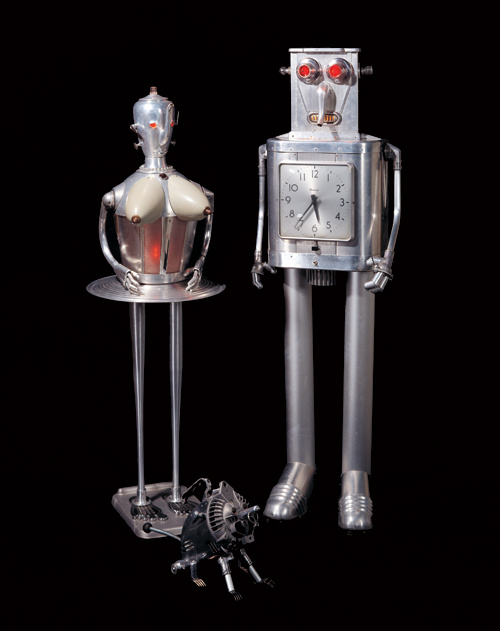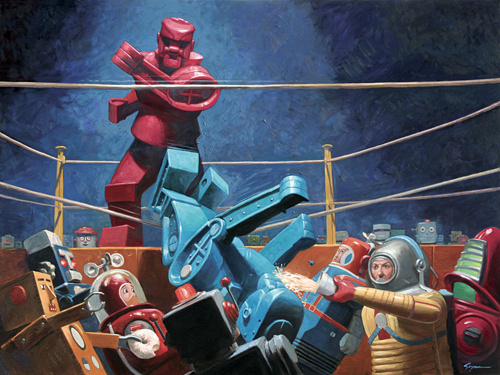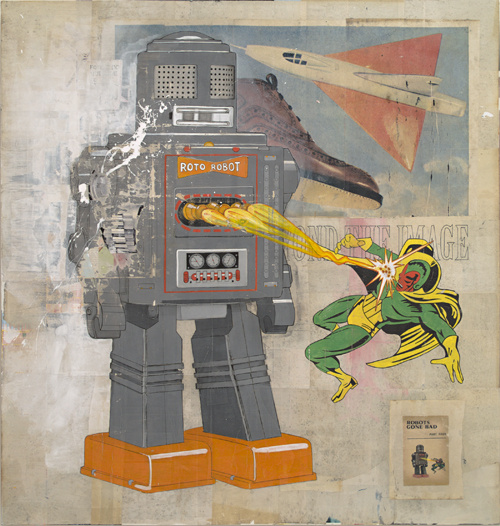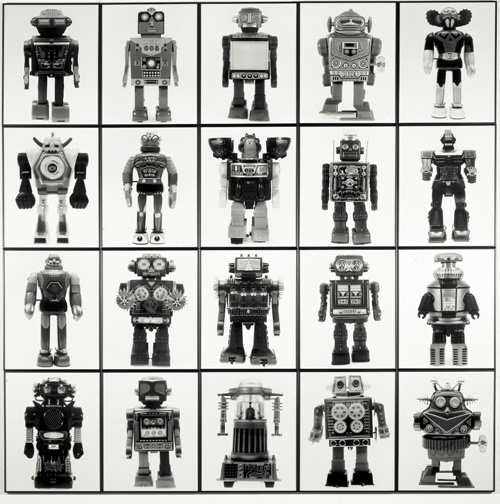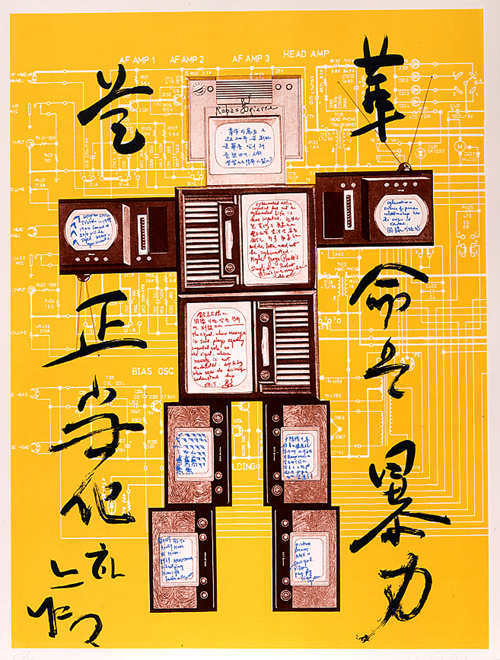Robots: Evolution of a Cultural Icon examines the development of robot iconography in fine art over the past 50 years. In 1920, the term robot was coined from a Czech word robota, which means tedious labor. Since then, the image and the idea of a robot have evolved remarkably from an awkward, mechanical creature to a sophisticated android with artificial intelligence and the potential for human-like consciousness. As robotic technology catches up with the wild imagination of science fiction novels, movies, and animation, dreams and fears anticipated in these stories may also become reality. Artists included in the exhibition have responded to the technological innovation with optimism, pessimism, and humor, presenting work that ultimately explores our ambivalent attitudes towards robots.
Download the iPod Tour for this exhibition at iTunes.
Robots: Video Labels
For the exhibition Robots: Evolution of a Cultural Icon, the San Jose Museum of Art is offering "Video Labels" for several of the artists work. The artists are Clayton Bailey, Nemo Gould, Eric Joyner, David Pace, Lisa Solomon and Gail Wight. Watch the videos here or check out a iPod Touch at the museum and watch them in better resolution on our tour. Have an iPhone of iPod Touch of your own? Go to www.sjma.mobi!
The exhibition features sculptures, paintings, photographs, digital media, and installations created by more than 20 artists. While some artists meticulously create portraits or representational sculptures of robots, others address a range of social and cultural issues through robot iconography. For example, in The Battle of Twin Palms (2004), Jeff Soto comments on mankind’s adverse effect on the environment by depicting warfare between biomechanical creatures. Gail Wight's Star Struck (2001) is a tiny diorama of a robot's beautifully detailed, scruffy living room. A toy mechanical robot is sitting on his easy chair, his robot dog at his feet, watching Fritz Lang's Metropolis (1927) on his little TV. The floor is littered with crumpled Kleenex and the robot is sobbing, his body convulsing. Lang's Metropolis, the first true masterpiece of science fiction in film, is about a futuristic city and its Marxist heroine, a female robot, who comes to a tragic end.
Despite the exhibition’s seemingly lighthearted appearance, the artists demonstrate the serious implications posed by new technology and our physically disconnected contemporary lifestyle. Both nostalgic and futuristic, the exhibition provides visual reflection on the technological advancements that are fast becoming an essential part of our civilization
Robots artists: Clayton Bailey, Chris Cunningham, Dalek, Feric, Nemo Gould, Amy Hicks, Eric Joyner, Chico MacMurtrie, Mars-1, Michael C. McMillen, Michael Mew, David Pace, Nam June Paik, Alan Rath, Ed Ruscha, Michael A. Salter, Lisa Solomon, Jeff Soto, Jason Van Anden, H.C. Westermann, Gail Wight, Kow Yokoyama, and Thomas Zummer. The exhibition is curated by SJMA senior curator JoAnne Northrup.
Traveling Info
- January 23 – April 5, 2009, Sonoma County Museum, Santa Rosa, California
- September 20 – December 21, 2009, Ulrich Museum of Art, Wichita, Kansas
- February 6 – May 16, 2010, Boise Art Museum, Boise, Idaho
